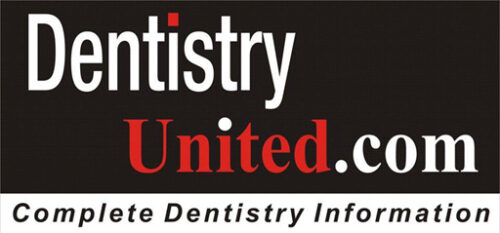The Beginning – A Conversation at Smile Maker Dental Clinic, Mysore
It was a quiet afternoon at Smile Maker Dental Clinic, Mysore. The faint hum of the sterilizer blended with the aroma of freshly brewed filter coffee. Dr. Hajeera Banu, known among her peers for her balanced blend of clinical depth and human warmth, was reviewing a full-arch rehabilitation case when a soft knock interrupted her focus.
Standing at the door was Dr. Ian, her friend’s son — freshly graduated, full of curiosity, and recently joined her clinic as an associate. His eyes held the restless eagerness of one beginning to shape a career in implantology, the discipline he wished to master.
“Dr. Hajeera,” he began, “everyone talks about implant success — but what about implant complications? How do we anticipate them before they even appear?”
She smiled — the kind of smile that carried both kindness and authority. “That,” she replied, “is the essence of good implantology — not merely placing titanium, but understanding its dialogue with biology. Let me show you a way to remember it. We call it the BONE–PRECISION–HEAL–STABLE–GUARD framework.”
And thus began an afternoon lesson — equal parts science and mentorship — that Dr. Ian would remember throughout his professional life.
Dental implantology stands at the intersection of precision, biology, and restorative artistry. Every implant placed represents a promise — of function restored, esthetics revived, and confidence renewed. Yet, beyond titanium and torque lies the clinician’s ability to foresee, prevent, and manage complications at each stage.
This structured framework, built around five intuitive acronyms — BONE, PRECISION, HEAL, STABLE, and GUARD — guides clinicians from diagnostic insight to long-term follow-up, combining biological science with surgical judgment.
Preoperative Stage – BONE
- Baseline systemic assessment
- Occlusal harmony and TMJ evaluation
- Necessary bone quality and volume assessment (for example, through CBCT)
- Elimination of root stumps and infection foci
Preoperative diligence determines the implant’s destiny. Beyond evaluating bone height and density, the clinician must examine soft-tissue biotype, mucosal health, and the gingival line. Systemic considerations such as diabetes, smoking, and osteoporosis can profoundly influence osseointegration. Incorporating CBCT imaging ensures three-dimensional understanding of bone anatomy, while clearing infection foci establishes a sterile biological field.
Intraoperative Stage – PRECISION
- Protection of nerves and vital structures
- Retention of implant surface integrity (avoiding contamination)
- Excise unexpected infected tissue or residual roots
- Control hemostasis and tissue management
- Initial implant stability assessment
- Surgical angulation and depth accuracy
- Infection control
- Overheating avoidance
- Nurturing bone vitality
Surgery is where preparation meets discipline. The implantologist must safeguard neurovascular structures, maintain sterile handling, and achieve primary stability without compromising bone vitality. Precise angulation, controlled drilling under irrigation, and measured insertion torque minimize microstrain and ensure osseointegration.
Early Postoperative Stage – HEAL
- Healing monitoring of soft tissue and bone
- Early infection and peri-implant mucositis prevention
- Alignment and occlusal load assessment
- Live systemic changes monitoring (blood pressure, glucose, medication compliance)
Healing is both a biological process and a clinical responsibility. Close observation during this period detects early inflammation, wound dehiscence, or mucositis. Monitoring systemic parameters and ensuring medication adherence support uneventful healing. For immediate-load protocols, occlusal adjustment is critical to prevent micro-movement during osseointegration.
Late Postoperative Stage – STABLE
- Sustained peri-implant bone health
- TMJ and occlusion monitoring
- Assessment of prosthetic integrity
- Biomechanical load distribution review
- Long-term systemic health follow-up
- Esthetic outcomes and soft tissue stability evaluation
Implant success is measured not in weeks but in decades. Stability encompasses biological integration, mechanical endurance, and prosthetic harmony. Regular radiographs, occlusal refinements, and screw torque evaluations prevent biomechanical overload. Soft-tissue stability and pink esthetics define the visible success of the invisible foundation.
Prevention and Management Stage – GUARD
- Guided case selection
- Upkeep of surgical and prosthetic technique through continuous learning
- Active patient education
- Regular follow-up and monitoring using diagnostic tools
- Dynamic early intervention
The finest implantologists are not those who place implants flawlessly, but those who prevent failure systematically. Risk factor management — including glycemic control, smoking cessation, and bruxism correction — protects the implant ecosystem. Patient education and structured recalls using radiographs, probing depths, and hygiene reinforcement sustain long-term success.
Conclusion – BONE, PRECISION, HEAL, STABLE, GUARD
Implantology thrives on discipline. Each stage of the BONE → PRECISION → HEAL → STABLE → GUARD continuum reflects a principle that extends beyond protocol — it embodies professional maturity.
BONE lays the biological groundwork.
PRECISION converts planning into surgical excellence.
HEAL ensures biological continuity and patient compliance.
STABLE sustains biomechanical harmony and esthetic predictability.
GUARD defends the outcome through vigilance and prevention.
When these principles converge, the clinician transcends technique and achieves mastery — not merely in osseointegration, but in the enduring synthesis of biology, biomechanics, and belief.
About the Author
Dr. Hajeera Banu is a skilled dentist who graduated from RGUHS in 2014 and has since built a successful career in the field. With a strong focus on implants, restorative dentistry, and aligners, she has honed her expertise to offer her patients the highest level of care. Based in Mysore, India, Dr. Banu runs her own private practice, where she combines advanced dental techniques with a patient-centered approach.
Her passion for dentistry extends beyond her practice; she stays up-to-date with the latest advancements in the field to ensure she delivers the best outcomes. Outside of her professional life, Dr. Banu enjoys blogging, where she shares insights and experiences from her dental journey, as well as her love for cooking and traveling. These interests help to balance her dynamic lifestyle, and she continues to seek personal and professional growth in all aspects of her life. email dentistryunited@gmail.com

